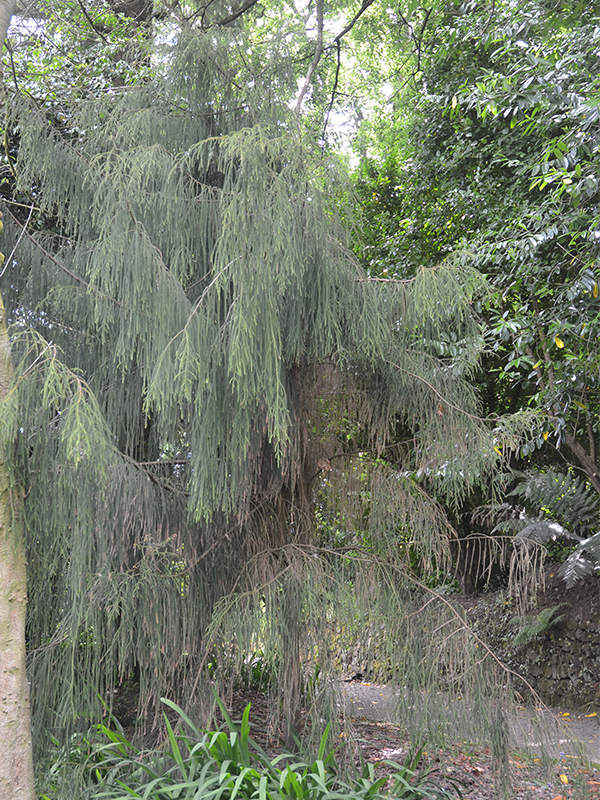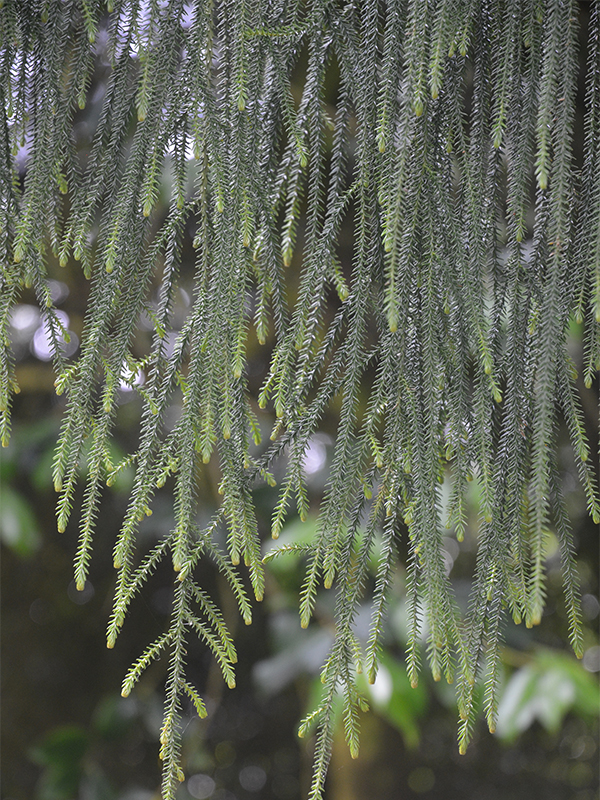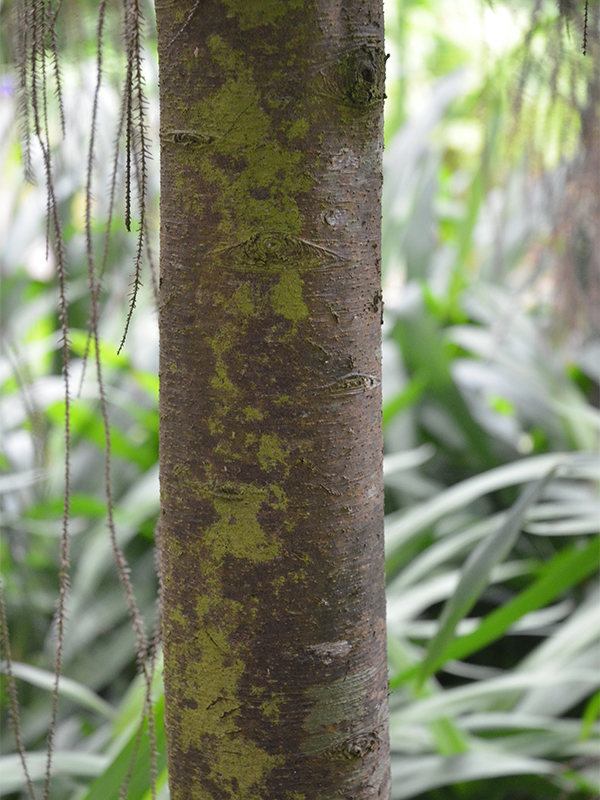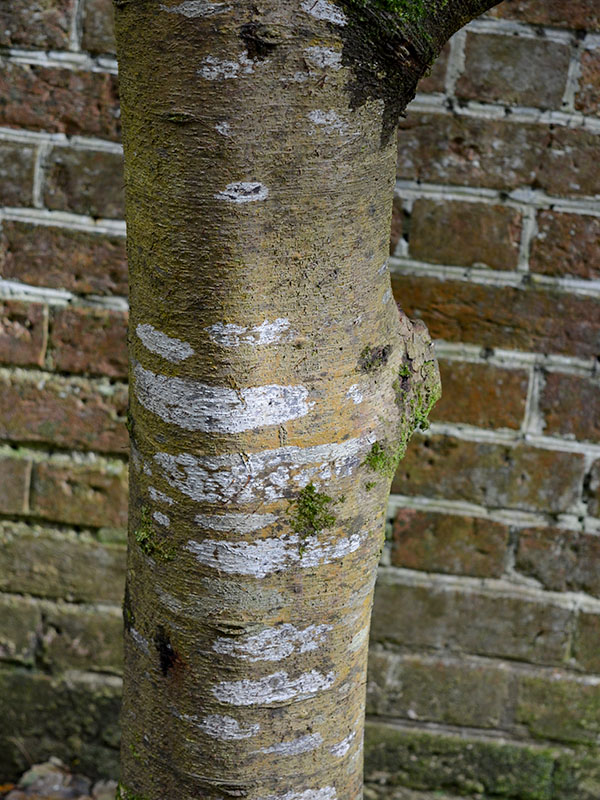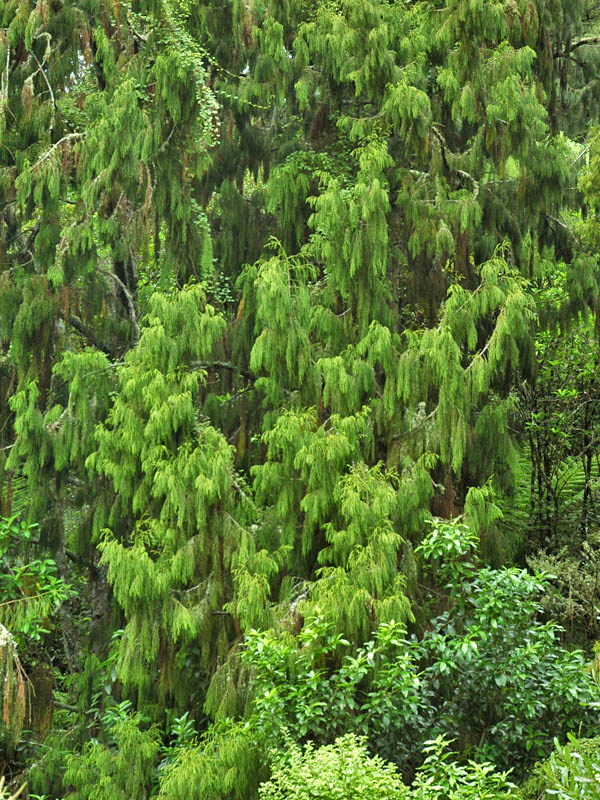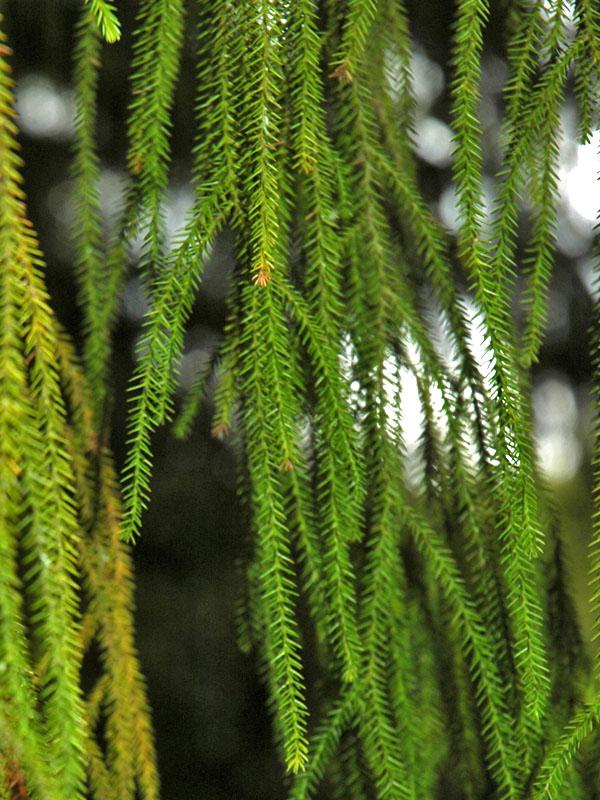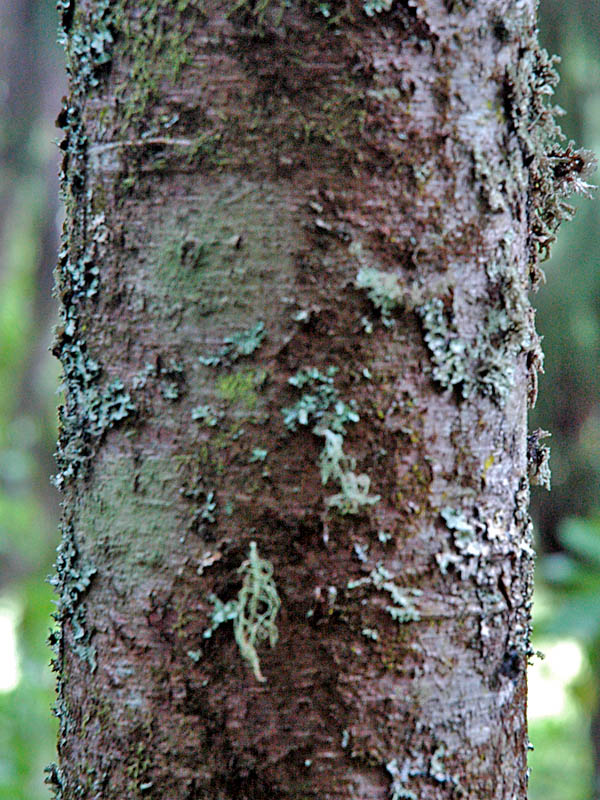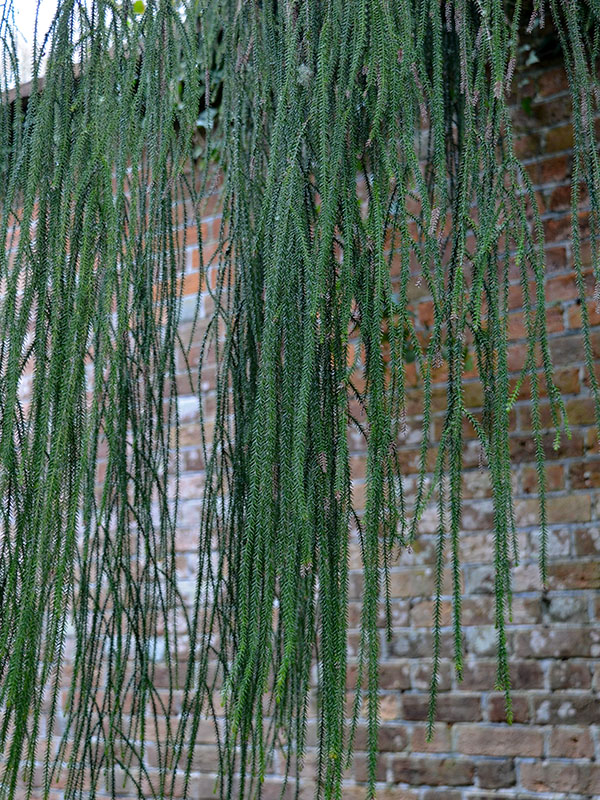
Tropicals, Woody > Dacrydium > Dacrydium cupressinum > Dacrydium cupressinum
Dacrydium cupressinum
Rimu
Origin: Native to New Zealand.
Mike's
Opinion


"
The Rimu is a visually pleasing dioecious conifer. It has the weeping-like habit of a willow tree, but being an evergreen, it provides year round interest. I believe this tree to be of great value since it possesses several notable uses, such as lumber for doors and frames, a food source, and is also said to have medicinal purposes. A favoured food source for many birds in New Zealand, it contributes to sustaining the plant and animal biodiversity of that country.
Michael Pascoe, NDP., ODH., CLT., MSc. (Plant Conservation)
"
| Family |
| Podocarpaceae |
| Genus |
| Dacrydium |
| Species |
| cupressinum |
| Category |
| Tropicals, Woody |
| Type |
| Tree (evergreen) |
| Pronunciation |
| USDA Hardiness Zone |
| 8 - 11 |
| Canadian Hardiness Zone |
| 8a (Possibly hardy in this zone, but not proven.) |
| RHS Hardiness Zone |
| H3 |
| Temperature (°C) |
| -1 - (-7) |
| Temperature (°F) |
| 20 - 30 |
| Height |
| 20 - 50 m |
| Spread |
| 10 m |
Photographs
Description and Growing Information
Flowering Period
| General Description |
| The Rimu is a dioecious conifer, meaning its female plants bear the flowers and fruit. It only flower and fruits every 5-6 years. This tree has an impressive lifespan typically ranging from 600 - 800 years old, however, some may even reach 1,000 years of age. |
| Landscape |
| Being very attractive in all of its growing stages. In New Zealand the Rimu tree is often used as an ornamental. It is a true rain forest specimen, and that is where it is most commonly found, providing good erosion control when mature and well established. There is a belief of the Maori tribe that the Rimu should be planted in groups of 3. |
| Cultivation |
| Ideally suited to a sheltered and moist environment, it is also capable of growing in full sun. It prefers soils with neutral pH levels. |
| Shape |
| Pyramidal shape, with a weeping habit. |
| Growth |
| Slow |
| ID Characteristic |
| With beautiful bright red fruit covering its elegant pendulous branches, it is easily identified. It has a weeping like habit, which is similar to that of a willow tree. When mature, this tree has a round-topped crown. It has lateral branches, which holds its descending branchlets and foliage. |
| Pests |
| Not known to be susceptible to any pests or diseases. Although many species such of birds, bats and rats enjoy feasting on the seeds. |
| Habitat |
| Mainly found in New Zealand in the lowland and montane forests. Also can be found on wet terraces on Stewart Island and the west coast of the South Island. |
| Bark/Stem Description |
| Dark brown bark that sheds thick flakes which leaves a wave like pattern on the trunk dappled with small bumps. It has dark red heartwood. |
| Leaf Description |
| Yellowish and green in colour. The needles are 4-7 mm long and awl-shaped when juvenile. As the foliage matures they tend to shorten in length to only 2-3 mm long, and become closely set to the branchlet. |
| Flower Description |
| Flowering from December to March. |
| Fruit Description |
| Red cup-like fruit which hold the seeds, is edible. Seeds are only produced every 5-6 years. Small cones that are formed on the end of branchlets take about 18 months to ripen. Male and female cones are on separate trees. |
| Colour Description |
| Yellowish green foliage cover the pendulous branches of this species throughout the seasons. Except in winter when it turns a deep reddish brown. A fleshy cup like fruit, that is red in colour, covers the Rimu. The bark is a dark brown, with a rich red heartwood interior. |
| Texture Description |
| Has a fine texture year round. |
| Notable Specimens |
| San Francisco Botanical Garden, San Francisco, California. Trengwainton Garden, Madron, Cornwall, United Kingdom. |
| Propagation |
| Propagated by seed, dispersed by gravity or birds. The seeds ripen typically between March and May, roughly 15-18 months after it has been pollinated. A mature Rimu can potentially yield 200,000 seeds. During their first few years as seedlings, they face a high mortality rate. This destroys many of the young seedlings, leaving a significantly decreased amount of saplings. |
| Ethnobotanical Uses (Disclaimer) |
| Previously a popular source of wood for furniture and house construction. The Rimu is now protected by government policies forbidding the felling of it in public forests of New Zealand. However, on private land limited logging is still permitted. The inner bark of the tree has been used to treat burns and cuts. An alcoholic beverage much like spruce beer can also be made from the resinous sap of young branches. This 'beer' was also used to treat scurvy, as it is a high vitamin C. The Maori (Aboriginal people of New Zealand) would harvest the fruit as a food source. |
